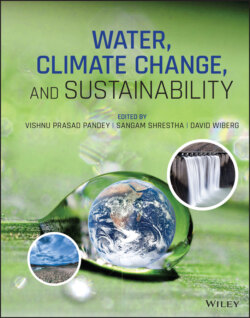Читать книгу Water, Climate Change, and Sustainability - Группа авторов - Страница 48
3.4. THE FRAMEWORK FOR WATER‐ENERGY NEXUS IN BIO‐BASED SYSTEMS
ОглавлениеEnergy is used in water supply, and the bio‐based systems use water and energy to produce different types of biofuels and bioproducts (Figure 3.4). For developing the bio‐based systems, sustainable use of energy and water in the production of fuels and chemicals is a challenging task. Sustainability of energy and water in bio‐based systems needs to be considered collectively and cannot be effectively resolved in isolation. While addressing the SDGs, to deal with this issue, a nexus approach is needed. The water‐energy nexus is one of the most complex, yet critical, issues that the society faces. Water and energy are interconnected resources that face numerous challenges including a growing global population, economic crises, poverty, hunger, and climatic uncertainties.
Water‐energy nexus refers to the relationship of how energy is used in water supply, and how water is used in energy supply and conversion (Figure 3.5). In bio‐based systems, the main products follow the post‐harvest logistics for delivery to the conversion step, while by‐products are used for other purposes. Then, biomass is converted into biofuels and electrical energy which is used to supply water for cultivation of agricultural crops in the bio‐based systems.
Developing renewable energy sources from bio‐based systems creates additional stress on water resources. For this reason, the lack of water availability in some regions limits the development of bio‐based energy systems. Water demand for biofuels production ranges widely; for example, for the whole process of corn production and conversion to ethanol around 5 to 2138 L of water is required per L of ethanol (Mckenna, 2009); the main reason for this high variation is regional irrigation requirements. In addition to water use for crop production and conversion to biofuels, a large amount of water is needed to remove excess heat in the power plants. For example, in thermoelectric power plants, generation of 1 kWh electricity needs the evaporation of about 7.6 L of water to remove the excess heat. Thus, water is likely to become the most limiting resource in the development of bioenergy systems from bio‐based feedstocks.
Figure 3.5 Energy and water use and supply in bio‐based systems.
